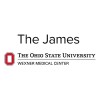
Neoadjuvant Therapy for the Treatment of Gastroesophageal Junction and Gastric Cancers
Clinical Stage I Gastric Cancer AJCC v8Clinical Stage II Gastric Cancer AJCC v823 moreThis phase I trial tests the safety, side effects studies chemotherapy followed by chemotherapy at the same time as radiation therapy (chemoradiation) before surgery (neoadjuvant) in treating patients with stage gastric (stomach) or gastroesophageal junction cancer . Chemotherapy drugs, such as docetaxel, oxaliplatin , leucovorin, fluorouracil, and capecitabine, work in different ways to stop the growth of tumor cells, either by killing the cells, by stopping them from dividing, or by stopping them from spreading. Radiation therapy uses high energy x-rays to kill tumor cells and shrink tumors. Giving chemotherapy and chemoradiation before surgery may make the tumor smaller and may reduce the amount of normal tissue that needs to be removed.

A Study of RC48-ADC Combination Therapies as First-line Treatment in Advanced Metastatic Gastric...
Gastric CancerThis is a Phase II/III, randomized, multicenter, open-label clinical trial designed to evaluate safety and efficacy of RC48-ADC combine with Toripalimab and chemotherapy or RC48-ADC combine with Toripalimab and Herceptin as first-line treatment in human epidermal growth factor receptor 2 (HER2)-expression participants with locally advanced or metastatic gastric cancer.

Perioperative Chemotherapy Plus Toripalimab for Epstein-Barr Virus-associated Locally Advanced Gastric...
Adenocarcinoma of the StomachAdenocarcinoma of Esophagogastric Junction1 moreThis study is a prospective, single arm, multi-center phase II clinical trial designed to evaluate the efficacy and safety of perioperative SOX combined with toripalimab in participants with Epstein-Barr Virus-associated locally advanced gastric or esophagogastric junction adenocarcinoma.

A Study of SI-B003 and BL-B01D1+SI-B003 in the Treatment of Patients With Locally Advanced or Metastatic...
Esophageal CancerGastric Cancer1 moreObjective: To investigate the efficacy, safety and tolerability of SI-B003 monotherapy and BL-B01D1+SI-B003 dual agents in patients with locally advanced or metastatic esophageal cancer, gastric cancer, colorectal cancer and other gastrointestinal tumors, and to further explore the optimal dose and mode of combination.

To Evaluate the Efficacy and Safety of Cadonilimab With SOX as Neoadjuvant Therapy for Resectable...
Gastric CancerThe Purpose of This Study is to Evaluate the Efficacy and Safety of Cadonilimab(AK104) in Combination With SOX as Neoadjuvant Therapy for Patients With Resectable Locally Advanced Gastric or Gastroesophageal Adenocarcinoma.

Feasibility and Safety of Robotic Assisted Proximal Gastrectomy With Double-flap Technique for Proximal...
Stomach NeoplasmsProximal early gastric cancer can choose radical total gastrectomy or proximal gastrectomy. The patients have poor nutritional status and quality of life after total gastrectomy. Compare to total gastrectomy, the nutritional status can improve after proximal gastrectomy . But if use simple esophagogastric anastomosis for proximal gastrectomy, the incidence of postoperative reflux esophagitis is high, which seriously affects the quality of life, and the short-term outcome is poorer than the total gastrectomy. If the incidence of postoperative reflux esophagitis can be reduced, proximal gastrectomy would be the treatment choice for proximal early gastric cancer, which may more improve both quality of life and nutritional condition than total gastrectomy. Double-flap technique is a new surgical reconstruction procedure between esophagus and remnant stomach. It can reduce the occurrence of reflux oesophagitis through reconstruction a simulative cardia. At present, the technique has been carried out in some hospitals in China but still lack large-scale prospective studies and evidence of evidence-based medicine. At present, some retrospective studies have shown that robotic assisted proximal gastrectomy with double-flap technique is safe and effective, and the learning curve is shorter than laparoscopic surgery. The applicant have finished two robotic assisted proximal gastrectomy with double-flap technique cases. Two patients recovered well after surgery, with no occurrence of anastomotic leakage or stenosis and the postoperative quality of life was good. Now we plan to conduct a multi-center, single arm study on proximal early gastric cancer patients(T1N0-1M0 and T2N0M0) to evaluate the feasibility of robotic assisted proximal gastrectomy with double-flap technique , and to evaluate the surgical and oncological safety of this surgical method. Aim to provide initial evidence of evidence-based medicine for its clinical application..

Evaluation of a Computer-aided Diagnosis System (CADx) in the Early Detection of Gastric Cancer...
Gastric CancerUpper gastrointestinal (GI) cancers are one of the most common cancers worldwide. Except for cardia cancers, the incidence of gastric cancer has decreased consistently since 1980, but remains at a high level. In France, gastric cancers are the 6th most common cause of cancer-related mortality. The risk factors of upper GI cancers are well known and their control could prevent the development of cancers: smoking cessation, reduction of obesity, alcohol, eradication of Helicobacter pylori. But late presentation with upper GI cancer results in a poorer prognosis. Patients with advanced (Stage IV) gastric cancer have a five-year survival rate of 3.7% whereas patients whose gastric cancer is discovered in its early stage (Stage I) have a significantly higher five-year survival rate of 88.4%. Therefore, endoscopic detection of upper GI lesions at an earlier stage is the single most effective measure for reducing cancer mortality. But upper GI cancer is also often missed during examinations, and some studies demonstrated a missed cancer rate of 2.3-13.9% in Western populations. In the past decade, accurate diagnosis during endoscopy has become particularly important as dysplastic lesions and early gastric cancers can be treated effectively with both endoscopic mucosal resection (EMR) and endoscopic submucosal dissection (ESD), avoiding the morbidity and mortality associated with gastrectomy. However, these early neoplastic lesions can be sometimes difficult to distinguish from background mucosa, even with advanced imaging techniques (high definition, chromoendoscopy). In recent years, image recognition using artificial intelligence (AI) with deep learning has dramatically improved and opened the door to more detailed image analysis and real time application in various medical field, including endoscopy. For example, in the colorectal cancer screening area, real time computer-aided detection systems (CADe) can lead to significant increases in both polyp and adenoma detection rates. CADe has also shown good performance in detection of Barrett's neoplasia during live endoscopic procedures in order to more accurately locate the area to be biopsied. Recently, a Chinese study showed that CADe achieved high diagnostic accuracy in detecting upper GI cancers, with sensitivity similar to that of expert endoscopists and superior to that of non-experts. This system could support non-experts by improving their diagnostic accuracy to a level similar to that of experts and provide assistance for improving the effectiveness of upper GI cancer diagnosis and screening. Although encouraging results have been published regarding the use of AI in the diagnosis of upper GI cancers, the clinical applicability of such systems in a European population has yet to be investigated. Therefore, we want to evaluate the diagnostic capability of a recent CADx compared to endoscopists in order to improve the real-time detection of early gastric cancers in our European center Edouard Herriot Hospital, Lyon, France, as well as 3 other tertiary centers in France (Limoges, Rennes and Nancy University Hospitals). With a high prevalence of stomach cancer, Japan is a world leader in high-quality diagnostic upper GI endoscopy, and the clinical routine in this country differs substantially from Western practice, with population-based screening programs. We will use for our study a CADx developed by AI medical service Inc. (1-18-1, Higashiikebukuro, Toshima-ku, Tokyo 170-0013, Japan), a Japanese company developing AI systems that supports endoscopist's diagnosis for the digestive tract. A recent study involving AI medical service system showed good results in the diagnosis of early gastric cancer compared to endoscopists, with a significantly higher sensitivity.

Short-term Outcomes of Laparoscopic Versus Open Gastrectomy With Lymph Node Dissection for Early...
Early Gastric CancerWhile the incidence of gastric cancer is gradually declining, it is the fifth most common cancer worldwide and the third most common cause of cancer related death worldwide according to GLOBOCAN 2018 data (Rawla P and Barsouk A.,2019). Laparoscopic distal gastrectomy for early gastric cancer(EGC) was first performed more than 20 years ago (Shi, Y et al.,2018). Laparoscopy-assisted gastrectomy (LAG) for EGC has been confirmed to have oncologic and long-term survival equivalency to the open technique and provide tremendous advantages over open surgery, such as good cosmesis, reduced pain, and shorter hospital stay(Katai H et al.,2017). Based on the experience of EGC, most experienced surgeons have applied the laparoscopic procedure in patients with locally advanced gastric cancer (AGC). Retrospective studies have assessed the technical and oncological safety of LAG with D2 lymph node dissection for AGC(Hao Y et al .,2016). Recently, results of two ongoing randomized controlled trials (RCTs) have revealed the surgical safety of laparoscopic distal gastrectomy with D2 lymphadenectomy for AGC . However, laparoscopic gastrectomy for locally advanced disease remains controversial(Hu Y et al.,2016). Here, we report the short-term surgical outcomes of a RCT comparing laparoscopic and open gastrectomy (OG) with D2 lymph node dissection for EGC, which was designed to assess the technical safety and oncologic feasibility of LAG for EGC.

Validation of a Molecular Test for Risk-stratification of Patients With High-risk Intestinal Metaplasia...
Stomach NeoplasmThis study is carried out to find out if a customized molecular test can identify a subgroup of patients with very-high-risk of developing stomach cancer within patients with intestinal metaplasia (IM). The investigators hypothesise that the incidence of dysplasia and GC cases in the molecular-test-positive group will be significantly higher than that in the molecular-test-negative group. Such a test has the potential to guide clinicians to better manage patients with IM by allowing endoscopic surveillance to be focused on individuals at very-high-risk of developing stomach cancer, at the same time avoiding or reducing endoscopies for those at lower risk.

Thalidomide Combined With Chemotherapy and Monotherapy for Maintenance Treatment for Her2-negative...
Gastric Cancer Metastatic to LiverThe overall incidence of liver metastases from gastric cancer is about 9.9%-18.7%. Gastric cancer has strong heterogeneity and rapid disease progression, and the prognosis of liver metastasis is poor. The 5-year survival rate of patients with liver metastases from gastric cancer is very low, making clinical treatment challenging. Thalidomide has immunomodulatory and anti-angiogenesis effects. It has been used in the treatment of multiple myeloma for more than 20 years, and there are many clinical studies in solid tumors. In recent years, thalidomide has been found to induce the degradation of IKAROS family transcription factors IKZF1 and IKZF3 in combination with CRBN. Therefore, it is very meaningful to explore the therapeutic value of thalidomide in advanced gastric cancer liver metastasis.
